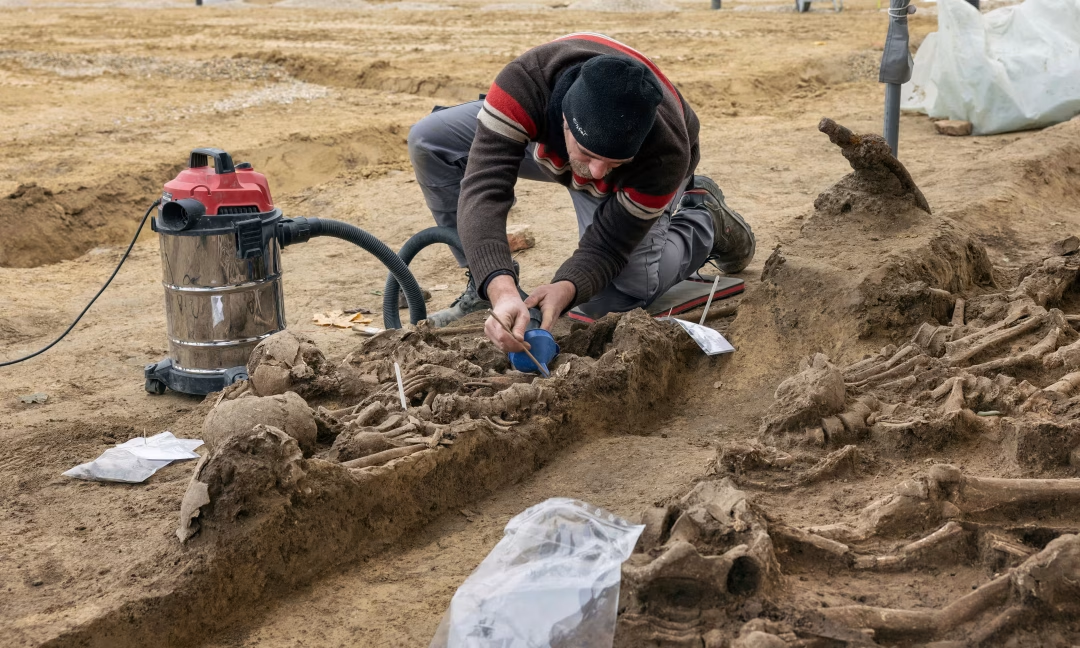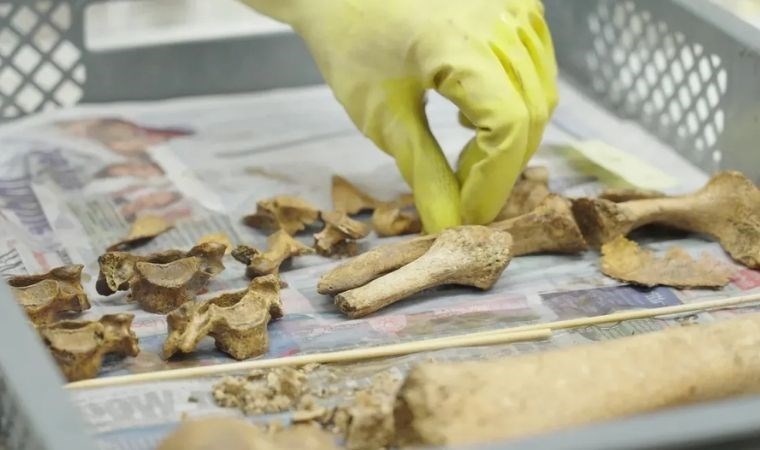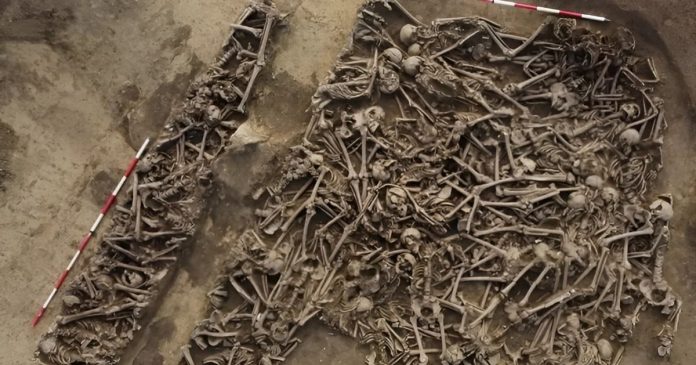Archaeologists uncovered a mass grave with the remains of approximately 150 Roman soldiers beneath a football pitch in Vienna, Austria, marking a remarkable archaeological breakthrough. This unprecedented find offers new insights into ancient military conflicts and burial practices.

Revealing an Ancient Tragedy
Renovation work on a football pitch in Vienna’s Simmering district led archaeologists to uncover a mass grave.Initial excavations revealed the skeletal remains of at least 129 individuals. However, due to the disturbance of bones during construction activities, archaeologists estimate that the total number of individuals could exceed 150. Archaeologists found the bodies hastily interred—many lying face down or on their sides—suggesting a rapid and unceremonious burial.
Identification and Analysis
Researchers identified the remains as male individuals aged between 20 and 30 years, most of whom stood over 1.70 meters tall. Archaeologists noted that all skeletons exhibited signs of violent death, including injuries from weapons such as spears, daggers, swords, and iron-tipped arrows. These findings indicate that the individuals died in battle, not through execution.

Historical Context
The mass grave likely dates back to the 1st century CE, during the Roman Empire’s push into Central Europe. Between AD 86 and 96, under Emperor Domitian, Rome fought major battles against Germanic tribes along the Danube frontier. Experts believe this site may offer the first archaeological proof of such a conflict. It could also reveal details about the early military history of Vienna, then known as Vindobona.
Implications for Roman Military History
This discovery is significant because complete Roman skeletons are rare, as cremation was the common burial practice. The find offers a unique chance to study the lives and deaths of Roman soldiers in the region, providing valuable insights into the military history and cultural practices of the Roman Empire.
Conclusion
The unearthing of this mass grave beneath a modern football pitch in Vienna serves as a poignant reminder of the city’s ancient past. As research continues, this discovery promises to enrich our understanding of Roman military history and the early development of Vienna.

